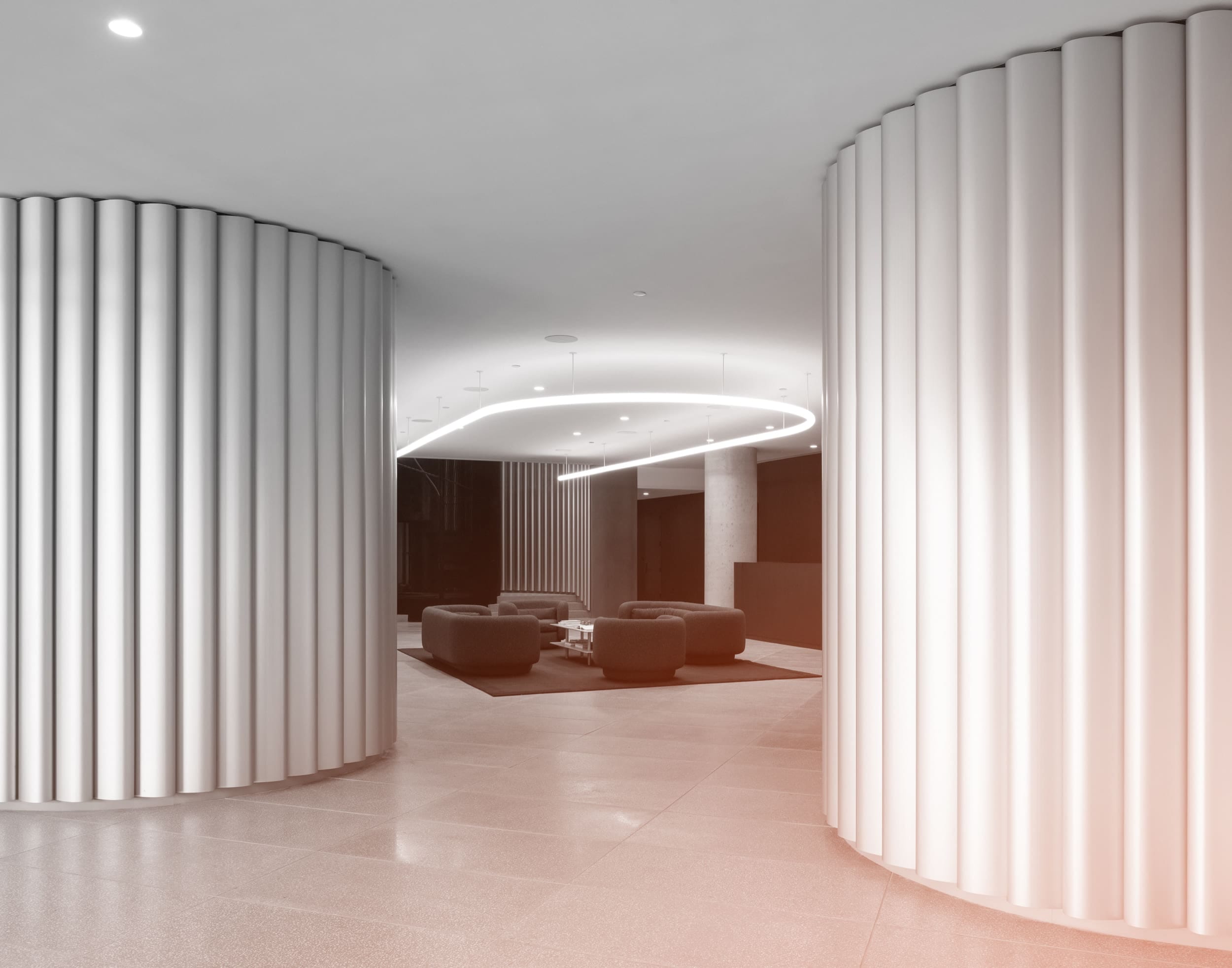Bronze: Qualities & Applications in Architecture
*Although we do not offer supply only sheets for bronze, we are happy to custom fabricate based upon your project’s needs. We selectively partner with vendors offering the highest quality materials available in many sizes and thicknesses. Please call for details.
Bronze is a term used to describe alloys of copper and tin or copper and silicon. At one time, the term “bronze” was specific to copper-tin alloys; however, it may also be used loosely to indicate the color of a number of copper alloys exhibiting a darker “bronze” tone.
For instance, “brass” is the name given to a series of copper-zinc alloys. The color of brass is usually associated with a golden yellow hue. However, some brass alloys are referred to as bronzes. Two alloys in particular, Commercial Bronze and Architectural Bronze, are both actually brass because of their high zinc content. A designer may specify a “bronze” materials, but performance and cost considerations may factor into the selection of a proper alloy chosen.
It is important to note that all of the copper alloys can achieve a “bronze” tone through patination. The patina will appear naturally over a few months of outdoor exposure. Once this layer of oxidization occurs, it will become difficult to distinguish between brasses, bronzes, and other copper alloys.
Even for experienced metal artisan, distinctions between these alloys can be difficult difficult. The easiest way to tell i by polishing a portion of the surface to bring out the true color of the alloy. A darker color indicates commercial bronze or red brass, while a yellow color indicates muntz metal or yellow brass.
A Brief History of Bronze
The advent of the Bronze Age, approximately 3000 B.C. to 1100 B.C., began a time of vibrant economic expansion for the region around Mesopotamia. This new metal allowed for rapid development of the tools necessary to the advancement of civilization.
Early civilizations discovered that small amounts of tin could be added to molten copper to form the bronze alloys. Bronze was easier to cast than copper, and the resulting metal was harder and would hold a sharpened edge longer. Axes, awls, hammers, and weapons could be cast with this harder metal. The use of tin as an alloying material marked the beginning of the age of metals, which continues to this date. Archaeologists have uncovered tin mining and smelting operations that date back to 2870 B.C. in the area north of the Mediterranean city of Tarsus.
The Future of Bronzes
Today, bronze, brass, and other copper alloys can be seen in a number of industrial as well as artistic uses. The materials provide a natural aesthetic whose performance characteristics provide long-term solutions for both interior and exterior designs.
To learn more about specifying your project in copper alloys, please contact a member of the Zahner sales team.














 PHOTO ©️ Parrish Ruiz de Velasco (parrch.com)
PHOTO ©️ Parrish Ruiz de Velasco (parrch.com)



 © Fedora Hat Photography
© Fedora Hat Photography Photo by Andre Sigur | ARKO
Photo by Andre Sigur | ARKO PHOTO © NAHO KUBOTA
PHOTO © NAHO KUBOTA





 Ɱ, Creative Commons Attribution-Share Alike 4.0 International license, edited.
Ɱ, Creative Commons Attribution-Share Alike 4.0 International license, edited.

